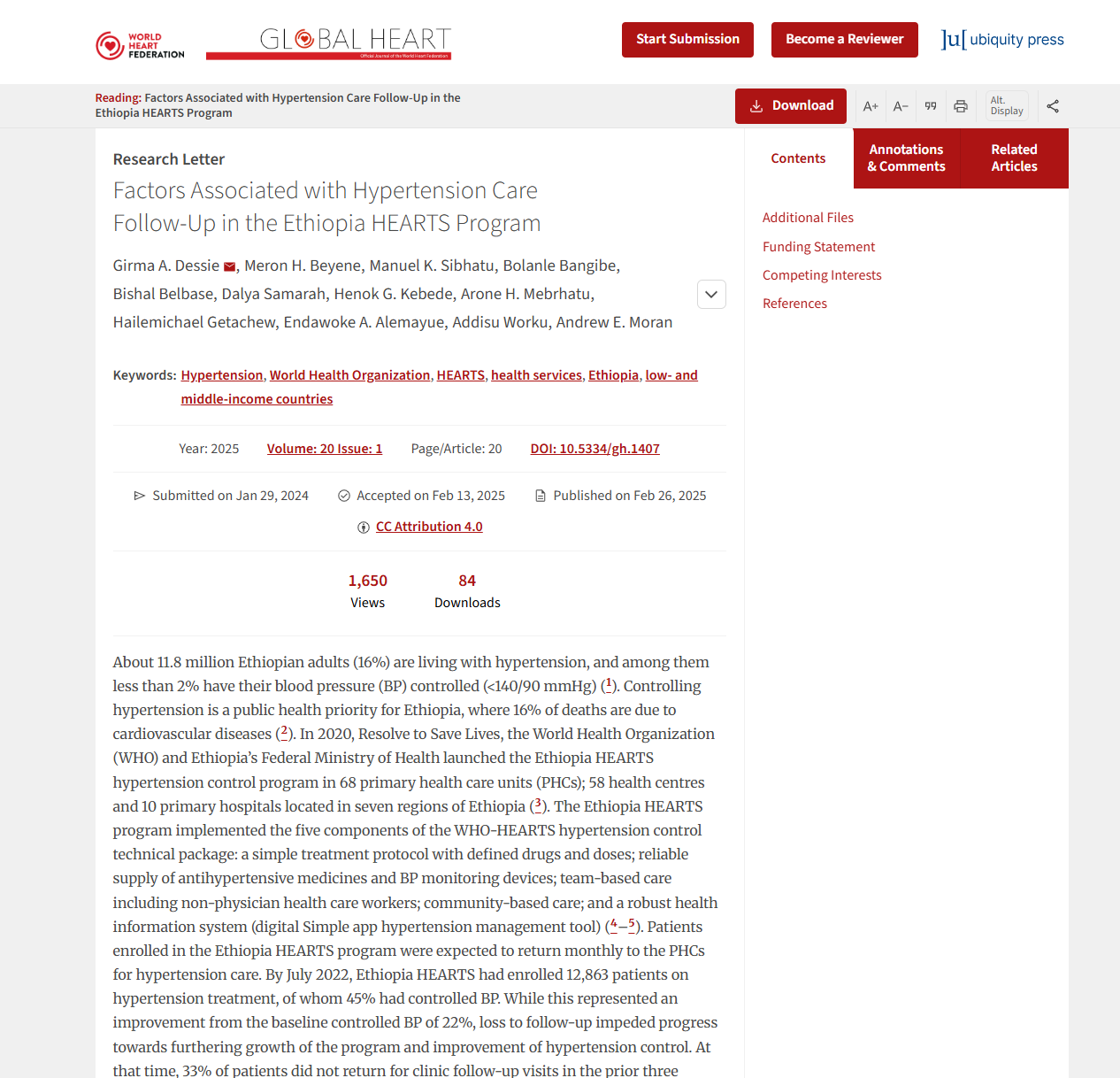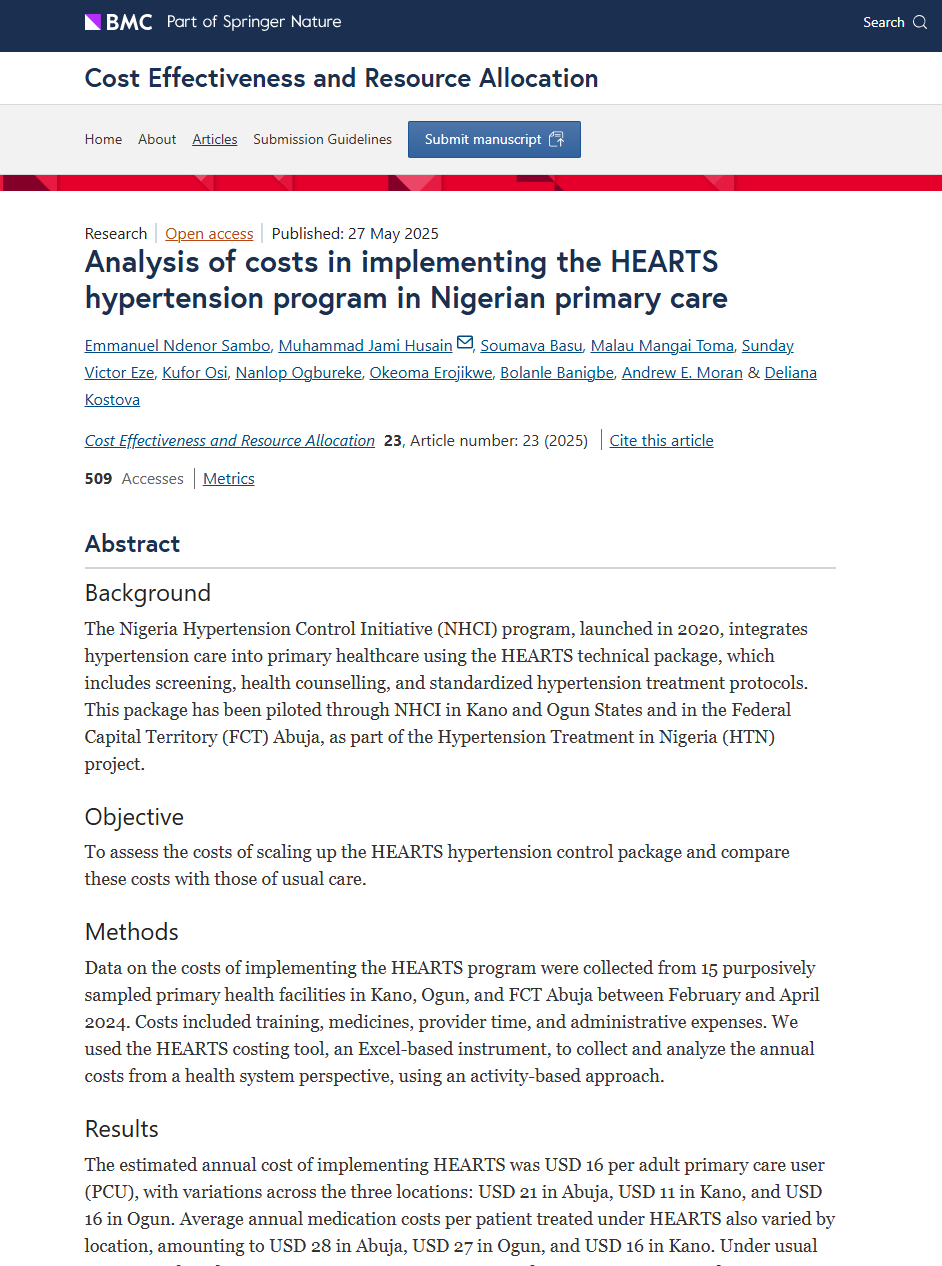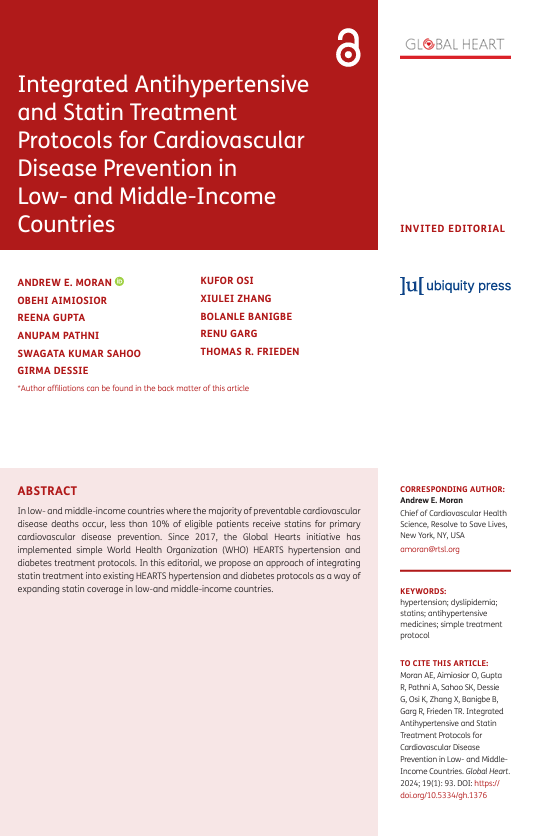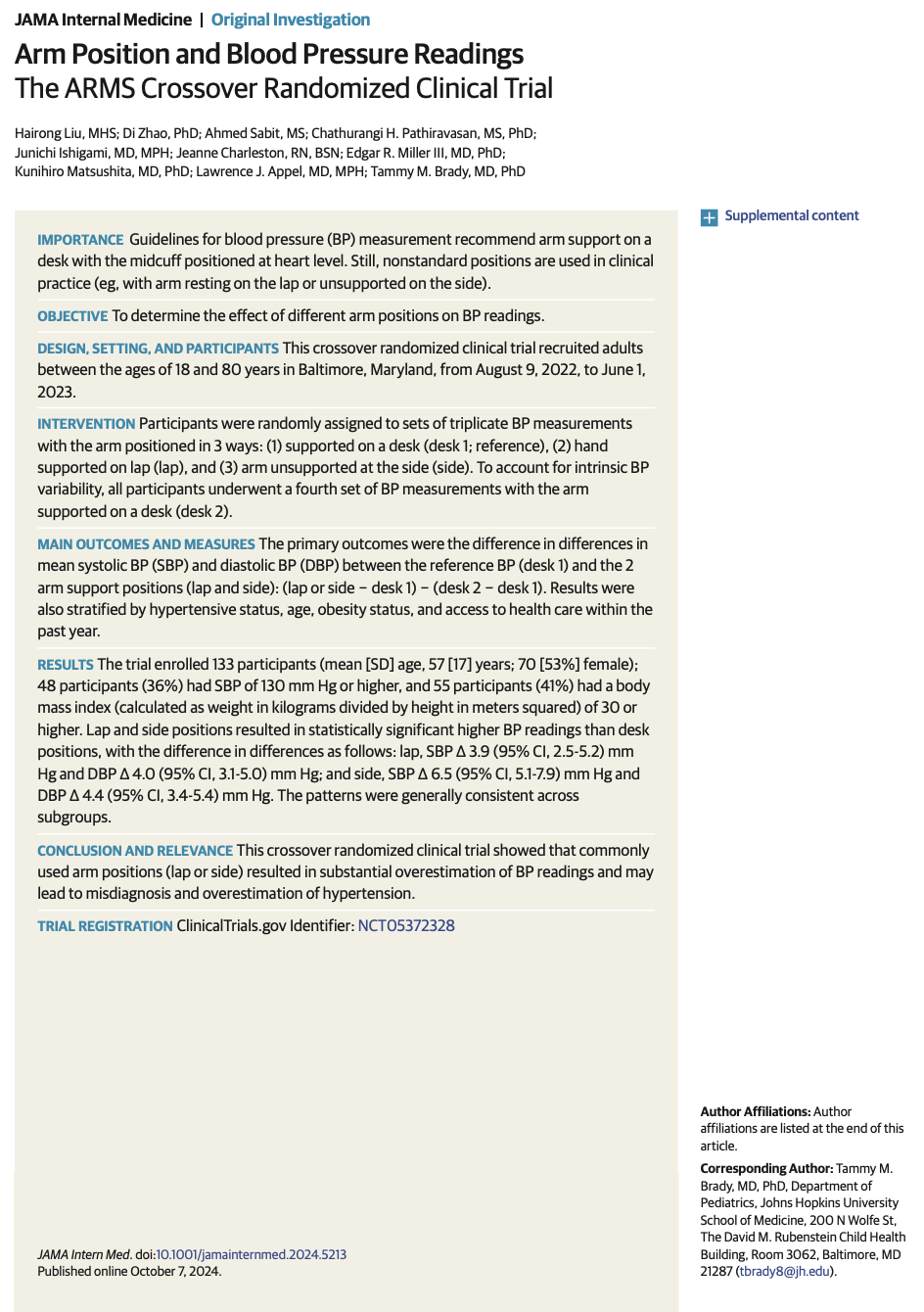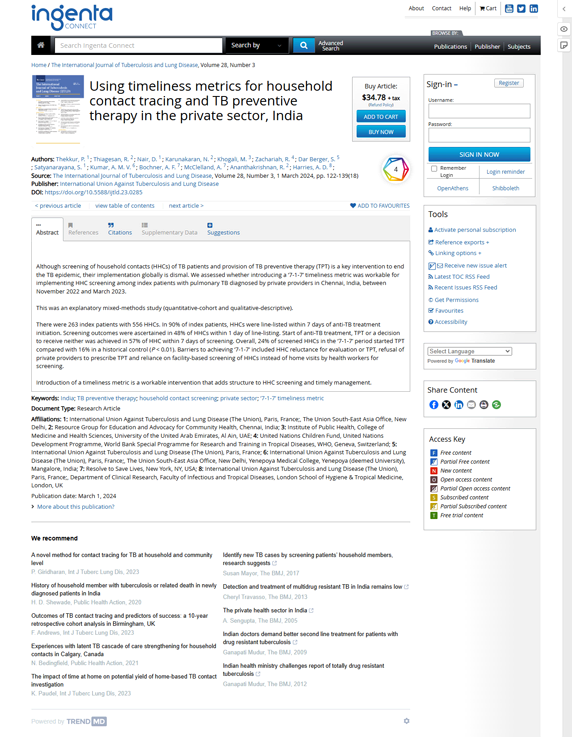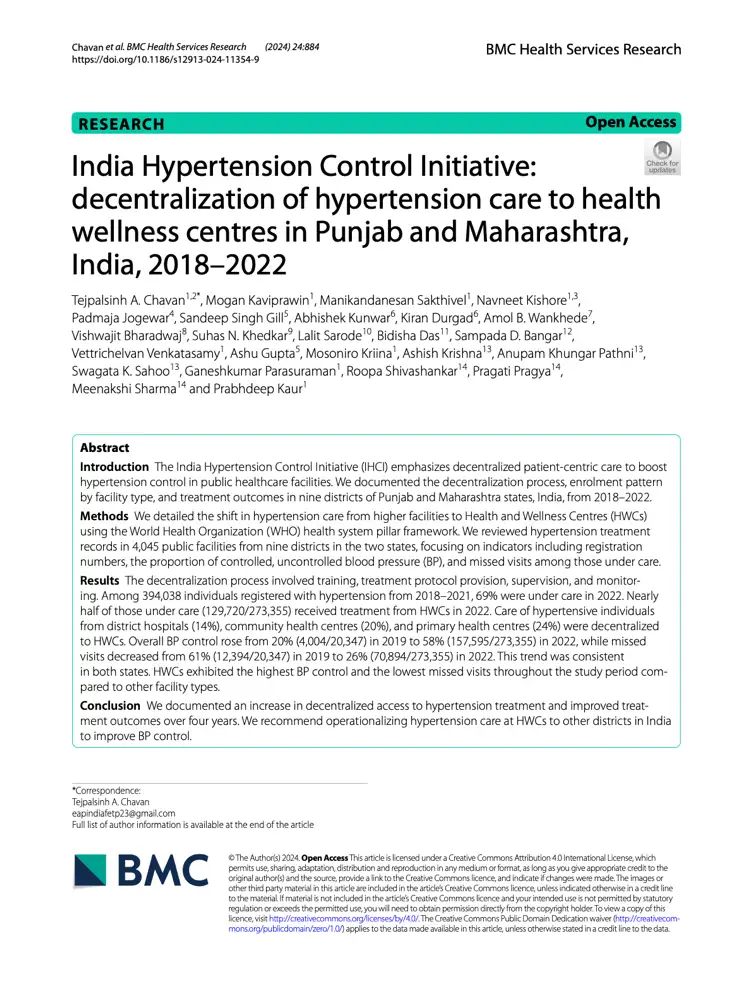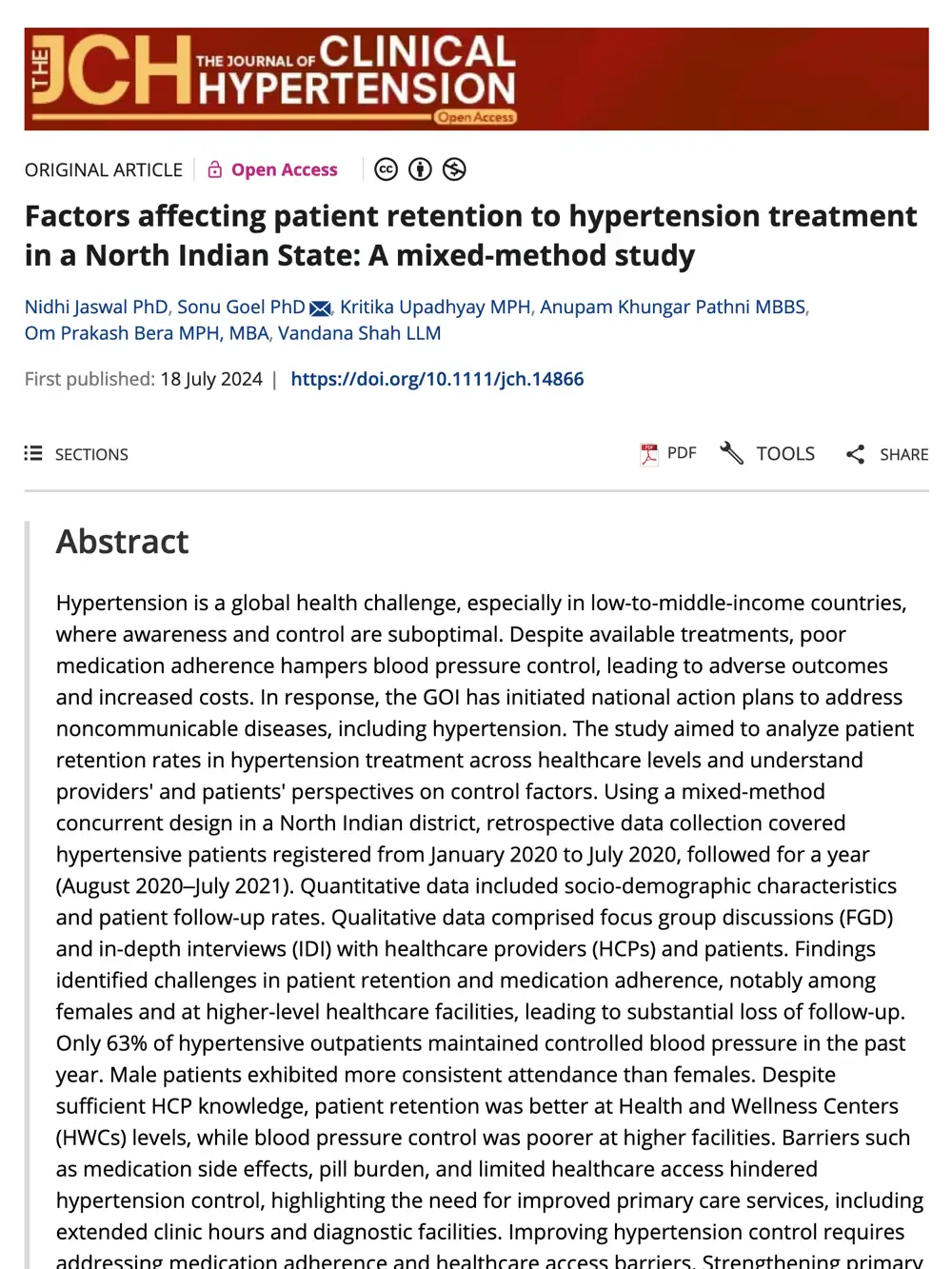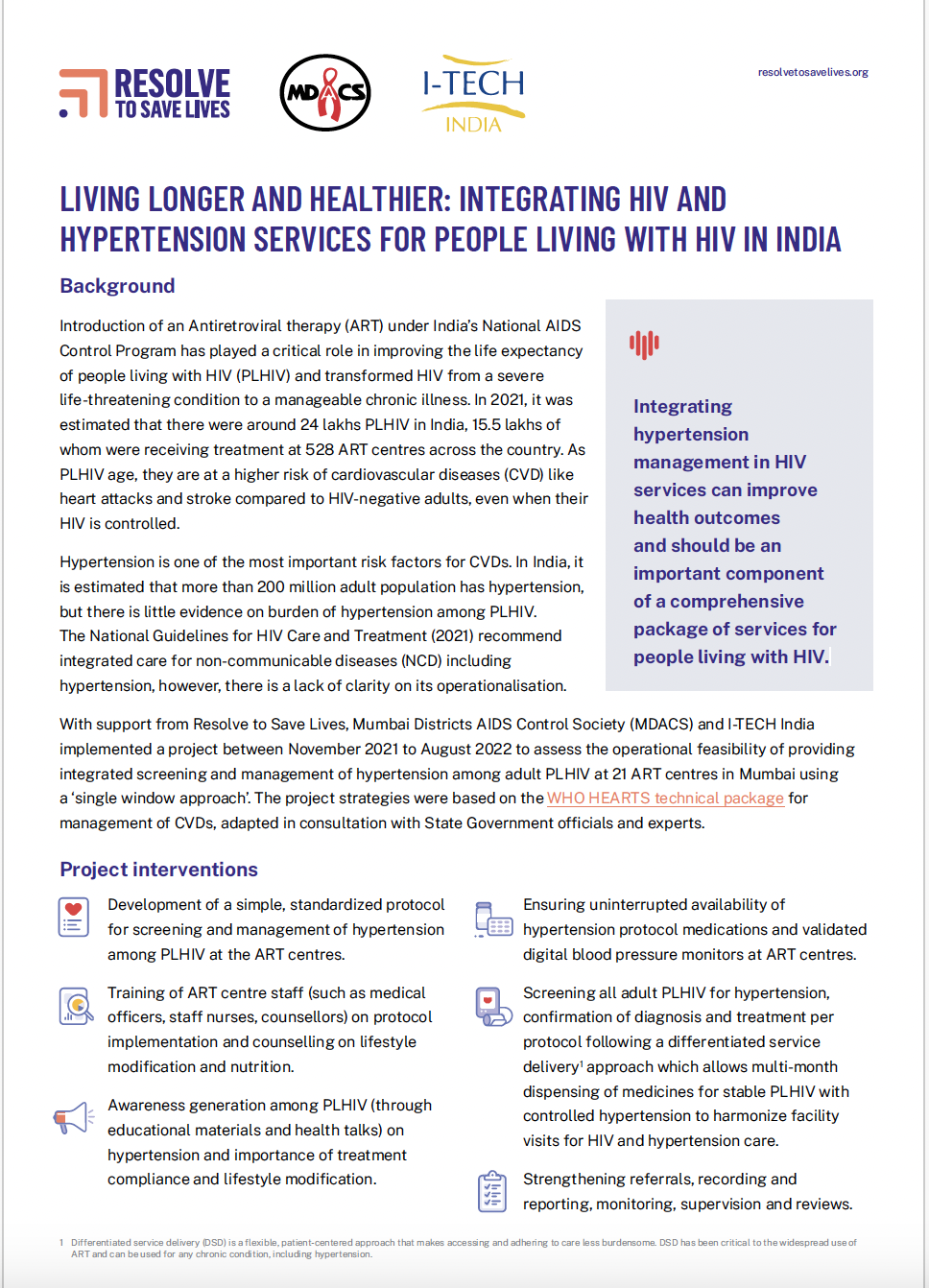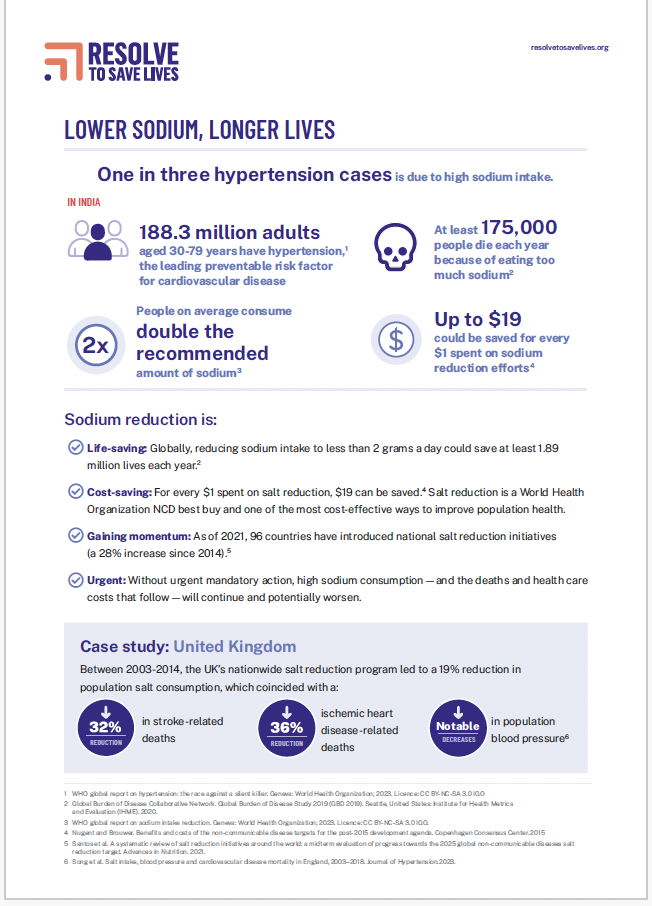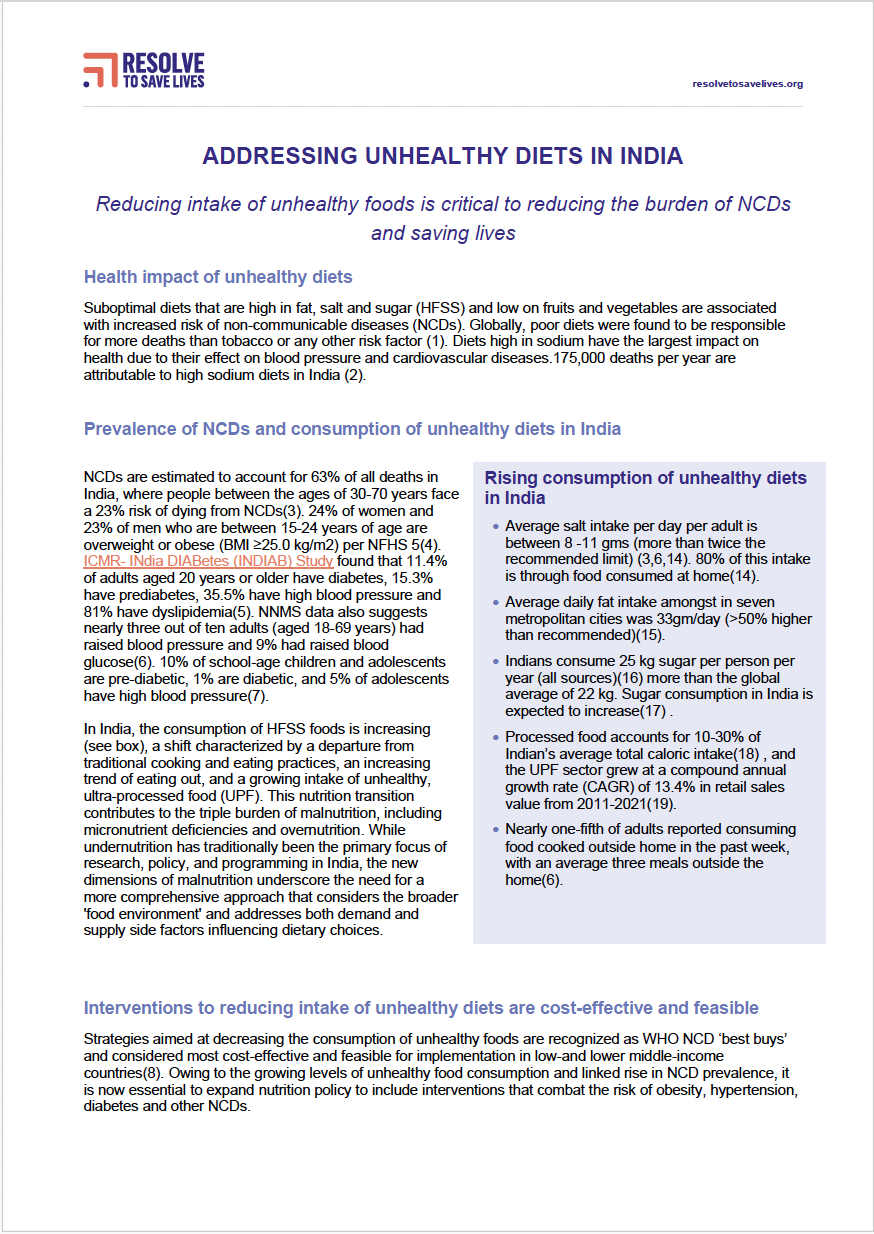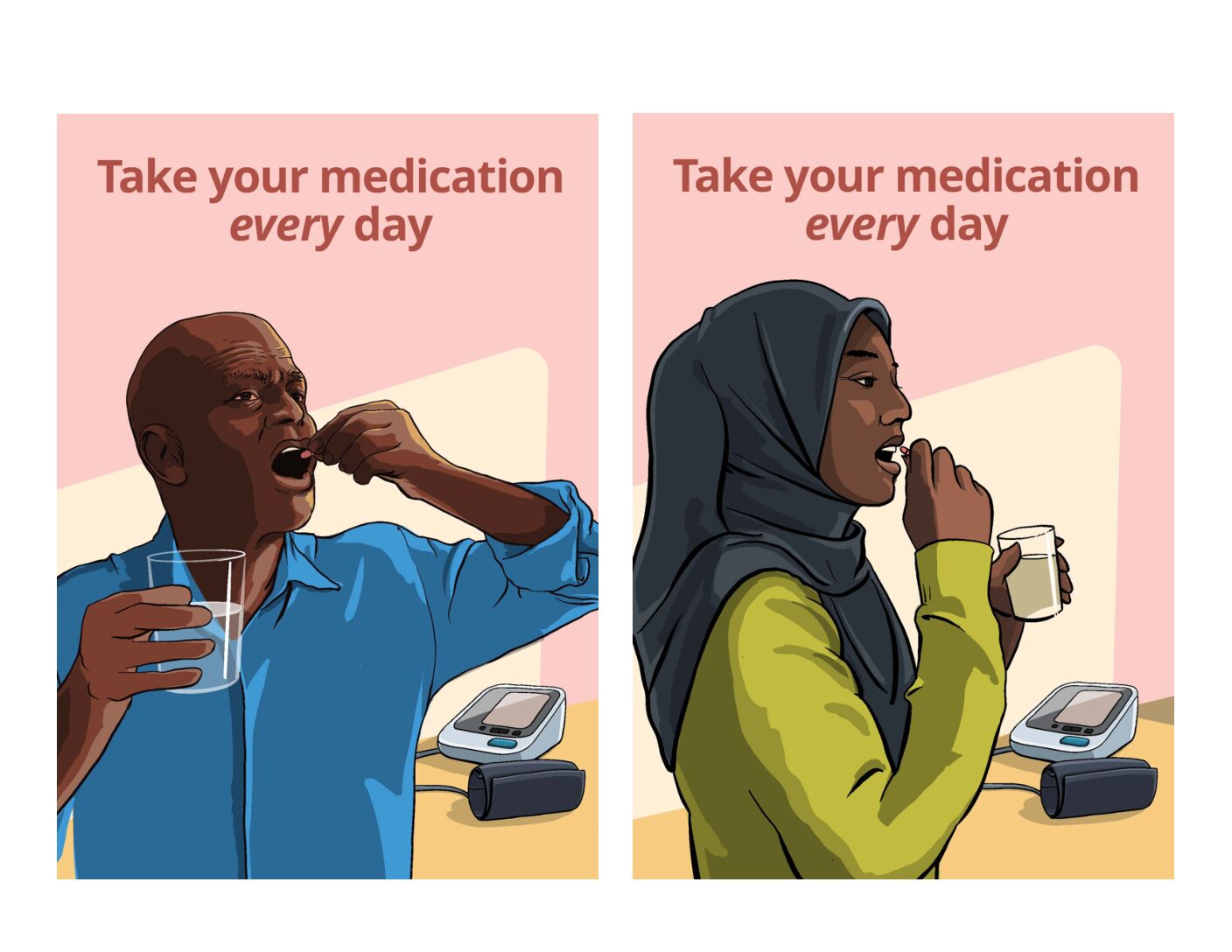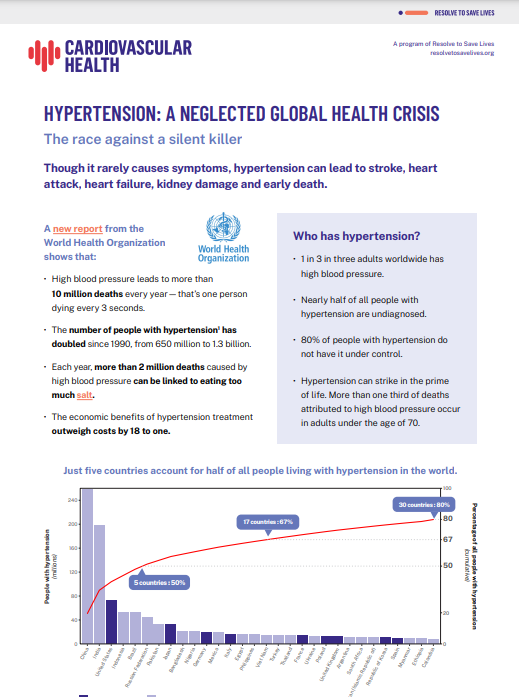Resource Library
Background & evidence
Patient retention rose from 52% to 76% and blood pressure control increased to 57%.
BMC – part of Springer Nature
Understanding the cost of scaling up hypertension services to help prevent and control high blood pressure in Nigeria.
Resolve to Save Lives
Heart health partnerships between 2018 and 2023 will result in 9 million fewer deaths worldwide. This report details how.
Resolve to Save Lives
Specific, measurable, and enforceable global standards for public food procurement
Resolve to Save Lives
New study on the impacts of providing free blood pressure medications .
Andrew E. Moran, et.al
Study shows that simple hypertension treatment protocols significantly improve high blood pressure control in primary health care settings.
Less than ten percent of patients in LMICs get the cholesterol medications they need to prevent heart attack and stroke. Integrating statins into existing HEARTS protocols can address this disparity.
Resolve to Save Lives
Sodium reduction is the single most important dietary intervention for improving heart health and saving lives
Lindsay S. Taillie, et al.
New study co-authored by RTSL suggests that warning labels are more effective for helping consumers avoid nutrients of concern like excess salt, sugar, and fat.
Our partners in Thailand advocate for engagement and coordination at all levels of care to control high blood pressure and reverse downward trend in Thailand.
Ummay Afroza, et al.
New study co-authored by RTSL and our partners in Bangladesh shows which warning labels on packages foods promotes healthy food choices.
Global Health Advocacy Incubator
World Cancer Research Fund
Andrew E. Moran, et al.
Encouraging private sector providers in India to prioritize high blood pressure control with a focus on improving medication access could make a big difference in health for the country.
Faulty blood pressure readings can put lives at risk. This new trial highlights how to measure blood pressures correctly to improve quality of care.
IJTLD
Can 7-1-7 help household contacts of tuberculosis patients get started on preventive therapy? In India, sites using the timeliness metric saw an increase in household contacts starting treatment.
Resolve to Save Lives
Resolve to Save Lives
Resolve to Save Lives
Resolve to Save Lives
BioMed Central Ltd
The Journal of Clinical Hypertension
Hypertension control requires access and adherence to effective treatment. This study found that patient retention significantly improves in community care settings, compared with larger facilities.
Resolve to Save LIves
Resolve to Save Lives
RESOLVE TO SAVE LIVES
Resolve to Save Lives
